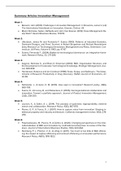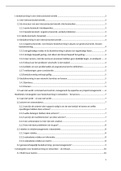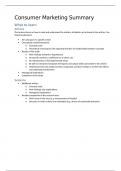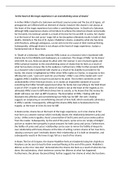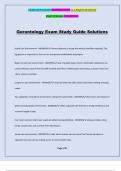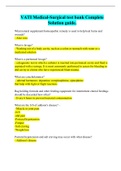Week 1:
• Bessant, John (2003): Challenges in Innovation Management. In Shavinina, Larisa V. (ed)
The International Handbook on Innovation, Elsevier, Oxford, UK.
• Bloom Nicholas, Sadun, Raffaella and John Van Reenen (2012): Does Management Re-
ally Work? Havard Business Review, 11/2012.
Week 2:
• Utterback, James M. and Fernando F. Suárez (1993): Patterns of Industrial Evolution,
Dominant Designs, and Firms’ Survival, in Robert Burgelman and Richard Rosenbloom
(eds.) Research on Technological Innovation, Management and Policy, Greenwich, Con-
necticut: JAI Press, Volume 6, 1993, pp. 47-87
• Suarez, Fernando F., (2004): Battles for technological dominance: an integrative frame-
work, Research Policy, 33, 271-286.
Week 3:
• Argyres, Nicholas S., and Brian S. Silverman (2004): R&D, Organization Structure, and
the Development of Corporate Technological Knowledge, Strategic Management Jour-
nal, 929-958.
• Henderson, Rebecca and Ian Cockburn (1996): Scale, Scope, and Spillovers- The Deter-
minants of Research Productivity in Drug Discovery. RAND Journal of Economics, 27,
32-59.
Week 4:
• Dahlander, L., & Gann, D. M. (2010). How open is innovation? Research policy, 39(6),
699-709.
• Faems, D., Van Looy, B., and Debackere, K. (2005). Interorganizational collaboration and
innovation: Toward a portfolio approach. Journal of Product Innovation Management,
22(3), 238-250.
Week 5:
• Laursen, K., & Salter, A. J. (2014). The paradox of openness: Appropriability, external
search and collaboration. Research Policy, 43(5), 867-878.
• Pisano, G. P., & Teece, D. J. (2007). How to capture value from innovation: Shaping in-
tellectual property and industry architecture. California management review, 50(1), 278-
296.
Week 6:
• Papanastassiou, M., Pearce, R., & Zanfei, A. (2020). Changing perspectives on the inter-
nationalization of R&D and innovation by multinational enterprises: A review of the liter-
ature. Journal of International Business Studies, 51(4), 623-664.
• Steinberg, P. J., Procher, V. D., & Urbig, D. (2017). Too much or too little of R&D offshor-
ing: the impact of captive offshoring and contract offshoring on innovation performance.
Research Policy, 46(10), 1810-1823.
1
,Week 1
Bessant, John (2003): Challenges in Innovation Management. In Shavinina, Larisa V. (ed)
The International Handbook on Innovation, Elsevier, Oxford, UK.
Abstract
Innovation represents the core renewal process in any organization. Unless a business is pre-
pared to work continuously at renewing what it offers and how it creates and delivers that of-
fering, there is a good chance that it won’t survive in today’s turbulent environment… So, man-
aging innovation becomes one of the key strategic tasks facing organizations of all shapes,
sizes and sectors. This chapter reviews the question of managing innovation and particularly
looks at some of the key challenges, which must be addressed.
Introduction
According to Utterback’s study, whole industries can be undermined and disappear as a result
of radical innovation which rewrites the technical and economic rules of the game. Two worrying
conclusions emerge from his work:
1) First, that most innovations which destroy the existing order originate from newcomers and
outsiders to a particular industry.
2) And second, that few of the original players survive such transformations.
So, the question is not one of whether or not to innovate but rather of how to do so successfully.
What Has to be Managed?
Innovation can be defined as ‘the successful exploitation of new ideas’, offered by the Innova-
tion Unit of the U.K. Department of Trade and Industry. Getting this process right once is possi-
ble through luck – the skill comes in being able to repeat the trick. It doesn’t matter what type
of organization; the underlying challenge is still the same. How to obtain a competitive edge
through innovation – and through this, survive and grow?
Essentially organizations have to manage four different phases in the process of turning ideas
into successful reality, they have to:
• Scan and search their environments (internal and external) to pick up and process signals
about potential innovation;
• Strategically select from this set of potential triggers for innovation those things which the
organization will commit resources to doing;
• Having chosen an option, organizations need to resource it – providing (either by creating
through R&D or acquiring though technology transfer) the resources to exploit it;
• Organizations have to implement the innovation, growing it from an idea through various
stages of development to final launch – as a new product or service in the external market-
place or a new process or method within the organization.
2
,• Organizations need to reflect upon the previous phases and review experience of success
and failure. In order to learn about how manage the process better, and to capture relevant
knowledge from the experience.
Innovation management is about learning to find the most appropriate solution to the problem
of consistently managing this process and doing so in the ways best suited to the particular
circumstances in which the organization finds itself. The trouble is that the innovation puzzle
which organizations are trying to solve is constantly changing and mutating.
Challenge 1: Why Change?
History teaches us that innovation is not a luxury item on the strategic agenda but a survival
imperative – unless organizations are prepared to change what they offer and how they create
and deliver that offering they may simply not be around in the long term.
Innovation may involve reconfiguring products, processes or markets. But in each case, it in-
volves learning and unlearning, and it requires strategic direction to focus this process.
The firms which demonstrate sustained competitive advantage exhibit “timely responsiveness
and rapid product innovation, coupled with the management capability to effectively co-ordi-
nate and redeploy internal and external competencies”.
Challenge 2: What to Change?
Even if firms recognize and accept the need for continuous innovation, they may find difficulties
in framing an appropriate innovation agenda. The challenge here is for firms to be aware of the
extensive space within which innovation possibilities exist and to try and develop a strategic
portfolio which covers this territory effectively, balancing risks and resources. Table 1 maps out
some options.
Table 1. The innovation agenda
‘Do what we do better’ ‘Do different’
Improvement innovation Radical innovation
Product or service offer- Improved versions of existing prod- Radical new product or service
ing ucts, Mk2, and later releases etc. concepts
Process for creating and Improvements to established pro- Radical alternative routes to
delivering that offering cesses – lean approaches to driv- achieving the process goal
ing out waste, quality improve-
ments, etc.
Positioning in market con- Repositioning or relaunching es- Radical re-framing of what is being
text tablished products or services in offered. Highlights the potential for
different context – e.g. opening up reframing to create new markets
new market niches
‘Paradigm’ – underlying New business models New ways of conceptualizing the
mental models problems
3
, Challenge 3: Understanding Innovation
Part of the problem in managing innovation is the way people think about it. Whilst the term is
in common usage, the meaning people attach to it – and hence the way in which they behave
– can vary widely. Table 2 lists some common misperceptions and partial views of innovation.
The challenge to managing the process well is to ensure a broader and integrated view to un-
derpin the structures and procedures which firms put in place to make it happen.
Table 2. Common problems associated with partial views of innovation
If innovation is only seen as… …the result can be
Strong R&D capability Technology which fails to meet user needs and may not be ac-
cepted
The province of specialists in white Lack of involvement of others, and a lack of key knowledge and
coats in the R&D laboratory experience input from other perspectives
Meeting customer needs Lack of technological progression, leading to inability to gain
competitive edge
Technology advances Producing products which the market does not want or design-
ing processes which do not meet the needs of the user and
which are opposed
The province only of large firms Weak small firms with too high a dependence on large custom-
ers
Only about ‘breakthrough’ Neglect of the potential incremental innovation. Also, an inability
changes to secure and reinforce the gains from radical change because
the incremental performance ratchet is not working well
Only associated with key individu- Failure to utilize the creativity of the remainder of employees,
als and to secure their inputs and perspectives to improve innova-
tion
Only internally generated The ‘not invented here’ effect where good ideas from outside are
resisted or rejected
Only externally generated Innovation becomes simply a matter of filling a shopping list of
needs from outside and there is little internal learning or devel-
opment of technological competence
Challenge 4: Building an Innovation Culture
In effect, innovation poses a constantly mutating puzzle, or set of puzzles. Firms cannot afford
not to play the game, but the rules are anything but clear. There is not the comfort of a single
‘right’ answer because the question keeps changing. And even if one firm does come up with
a solution which works for them it does not follow that everyone else adopting it will meet with
the same degree of success. Copying may simply make the problem worse.
Innovation routines are increasingly recognized as contributing to competitive advantage and
one important feature is that such routines cannot be simply copied from one context to another;
they have to be learned and practiced over a sustained period of time. Routines can begin by
the chance recognition of something that worked or as the result of trying a new and different
approach. But if they work repeatedly, they gradually get established and eventually formalized
4

